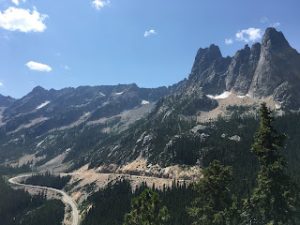What happens when one group of scientists accumulate a bunch of data, but don’t quite know the best way to ask their questions, work in the same integrative department as a pioneering mathematical biologist with new methods, but no dataset?
C.O.L.L.A.B.O.R.A.T.I.O.N.
Over the last few years the Sidor lab has been criss-crossing southern continents (formerly a part of Gondwana 250,000,000 years ago) collecting vertebrate fossils from areas that had not been very well studied. These fossils, including several exciting new species, are from rocks on either side of the largest mass extinction event of all time, the end-Permian extinction event (~252.3 million years ago). Differences between the pre- and post extinction worlds were qualitatively obvious to us paleontologists and included a turnover of species, the rise of new clades, and changes in the biogeographic characteristics of assemblages.
Last year Daril Vilhena, of the Bergstrom lab, and Chris Sidor began discussing a new method of biogeographic analysis that Daril was developing that used network theory. After much back and forth, including meetings with other paleo faculty, it became apparent that turning the biogeographic occurrences of different taxa in different places across different times into a network would be a valuable metric of biogeographic change.
This week our work was published in PNAS and received excellent coverage in the media. Please check the links below for a more specific and engaging summary of our research.
And here’s the paper!
~Brandon



